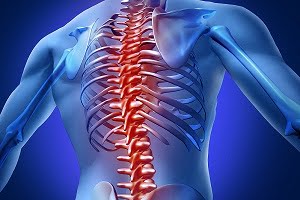What Is the Treatment of Osteoporosis?
- Updated on: Jul 29, 2024
- 4 min Read
By
- Published on Oct 19, 2019

Osteoporosis Treatment: Can it be treated completely?
Osteoporosis cannot be completely reversed but it can be managed. After obtaining information about the medical history, through physical exams and diagnostic tests, the doctor proceeds with the treatment.
Treatment for osteoporosis typically involves medications to strengthen bones and lifestyle changes to prevent fractures.
Medications for Osteoporosis
A number of different medications are used to treat osteoporosis. However, a number of factors are considered before deciding which medication to use because these medications generally have some side effects too. And these side effects may affect the different factors differently. The factors include:
- Age of the patient
- Bone mineral density
- Risk factors for fracture
The medications which are used for treating osteoporosis are given below:
Bisphosphonates
Bisphosphonates are the medications that slow down the rate of bone breakage. This maintains bone density and reduces the risk of fracture. There are a number of different bisphosphonates which are given to osteoporosis patients, including
- alendronate
- etidronate
- ibandronate
- risedronate
- zoledronic acid
These medications are given as a tablet or injection. There are certain things that should be kept in mind while taking these medications:
- Bisphosphonates should always be taken on an empty stomach with a full glass of water.
- Bisphosphonates should be taken for five years or longer because they usually take 6 to 12 months to work.
- Calcium and vitamin D supplements should be taken at a different time to the bisphosphonate.
Bisphosphonates may have some side effects which include:
- Irritation to the esophagus (the tube that passes food from the mouth to the stomach)
- Problem in swallowing food
- Stomach pain
Strontium ranelate
Strontium ranelate show effects on both the cells that break down bone and that create new bone. It can be used as an alternative to bisphosphonate if the latter is unsuitable.
Strontium ranelate is taken in powder form after dissolving it in water. The main side effects of strontium ranelate are:
- Nausea
- Diarrhea
- A rare severe allergic reaction
If the patient notices any kind of skin rash while taking these medications, their use should be discontinued and the doctor should be informed immediately.
Selective estrogen receptor modulators (SERMs)
SERMs are medications that affect the bone in the similar way the hormone estrogen does. SERMs are helpful in maintaining the bone density and decreasing the risk of fractures.
Raloxifene is the type of SERM that is usually recommended for treating osteoporosis. It is taken as a tablet every day. Side effects associated with the medication include:
- Hot flushes
- Leg cramps
- Increased risk of blood clots
- Risk of stroke death in women having heart diseases
- Endometrial cancer
- Vaginal discharge
Parathyroid hormone therapy
Parathyroid hormone regulates the amount of calcium in the body and it is produced naturally in the body. For treatment of osteoporosis, parathyroid hormone treatments are used to stimulate cells responsible for creating new bone. Hence, this therapy helps in increasing the bone density. They are given by injection.
Side effects of parathyroid hormones include:
- vomiting
- nausea
- accelerate bone loss if given in too much quantity
Calcium and vitamin D supplements
Calcium is the main mineral found in bone. For healthy bones, calcium should be consumed in adequate quantity. For adults the recommended amount of calcium is 700 milligrams (mg) per day. But for the people with osteoporosis the quantity that should be consumed is even more. Calcium supplements are therefore recommended for the patients.
Vitamin D helps the body to absorb calcium. For adults, the recommended amount of vitamin D to be consumed is 10 micrograms (mcg) per day. Since there are only a few foods which contain vitamin D, the doctor may recommend supplements.
Hormone replacement therapy (HRT)
Hormone replacement therapy is helpful for women experiencing the menopause to control the symptoms. HRT helps maintain the bone density and reduce the risk of fractures. This therapy is not specifically recommended as it increases the risk of various other conditions more than it lowers the risk of osteoporosis.
The side effects associated with HRT are:
- Breast cancer
- Endometrial cancer
- Ovarian cancer
- stroke
- Venous thromboembolism
Lifestyle Changes
Lifestyle plays a big role in improving health and maintaining it. Quitting bad habits and adopting good ones help in the treatment of osteoporosis. The lifestyles changes required are given below:
Including calcium and vitamin D in diet
Including plenty of calcium and vitamin in the diet is very important as it helps reduce the bone loss. Calcium strengthens the bone. The main sources of calcium are:
- Dairy products
- Dark green vegetables
- Enriched grains and bread
- Soy products
Vitamin D helps the body to absorb calcium. The main sources of vitamin D are:
- Fatty fish like salmon
- Foods fortified with vitamin D like orange juice, soy milk and cereals
- Beef liver
- Cheese
- Egg yolks
Physical activity
Exercise is a must for everyone irrespective of any health issues. Exercise helps the people with osteoporosis in several ways like:
- Regular exercise can reduce the rate of bone loss
- Exercise helps to build the muscle strength
- Regular exercise improves the body balance
- Exercise helps strengthen the bones
- Exercise increases flexibility
- Physical activity helps slow age-related bone loss
- Exercise can also help improve the body posture
All these benefits of regular exercise eventually help to build strong bones and muscles and decrease the risk of falls and fractures.
Limiting alcohol
Drinking too much alcohol disturbs the stomach. The stomach stops absorbing an adequate amount of calcium needed by the body. Alcohol affects pancreas ability to absorb calcium and vitamin D.
Liver functions are also disturbed by the consumption of alcohol. Vitamin D is not activated properly by it. An alcoholic person usually has no control over the body and his high risk of falling leads to fractures. Limiting alcohol consumption or preferably not having it at all is the best way to avoid all the above problems.
Avoiding tobacco
There is a direct relationship between tobacco use and decreased bone density. Tobacco use is very harmful to people with osteoporosis in following ways:
- The toxins found in tobacco (nicotine and free radicals) upset the balance of hormones (like estrogen). These hormones help bones to stay strong.
- Smoking also triggers other bone-damaging factors like an increased level of the hormone cortisol. Cortisol is responsible for bone breakdown.
- Tobacco toxins kill the bone-making cells, thus decreasing the bone density
- Chronic smoking damages blood vessels resulting in a poor blood supply of oxygen
- Fractures are not healed quickly in case of smokers because of poor blood supply
- Just like blood vessels, smoking also damages nerves in toes and feet, leading to more falls and fractures
Considering the above negative impacts of tobacco on the body, quitting tobacco is the best and safe option for people with osteoporosis.











